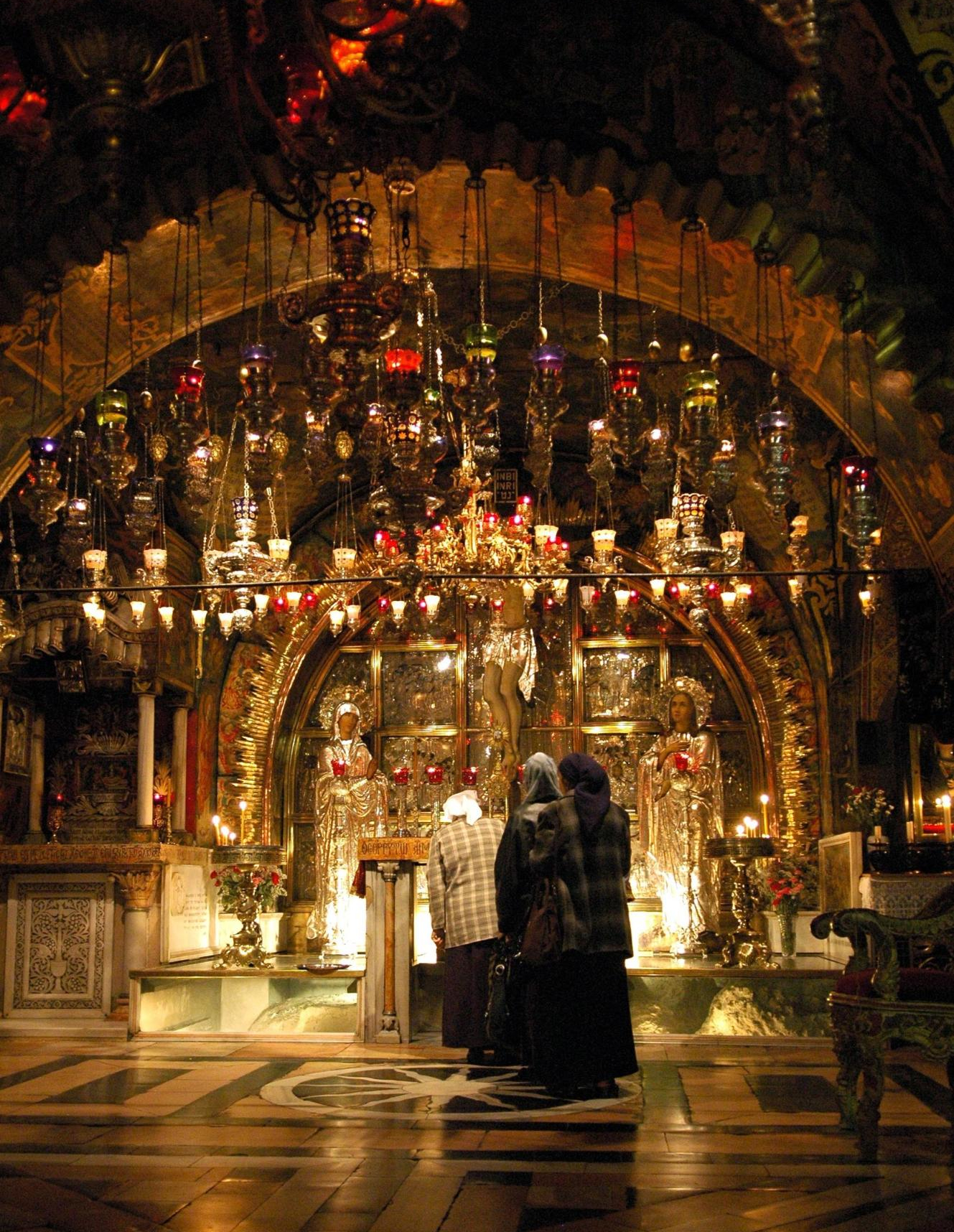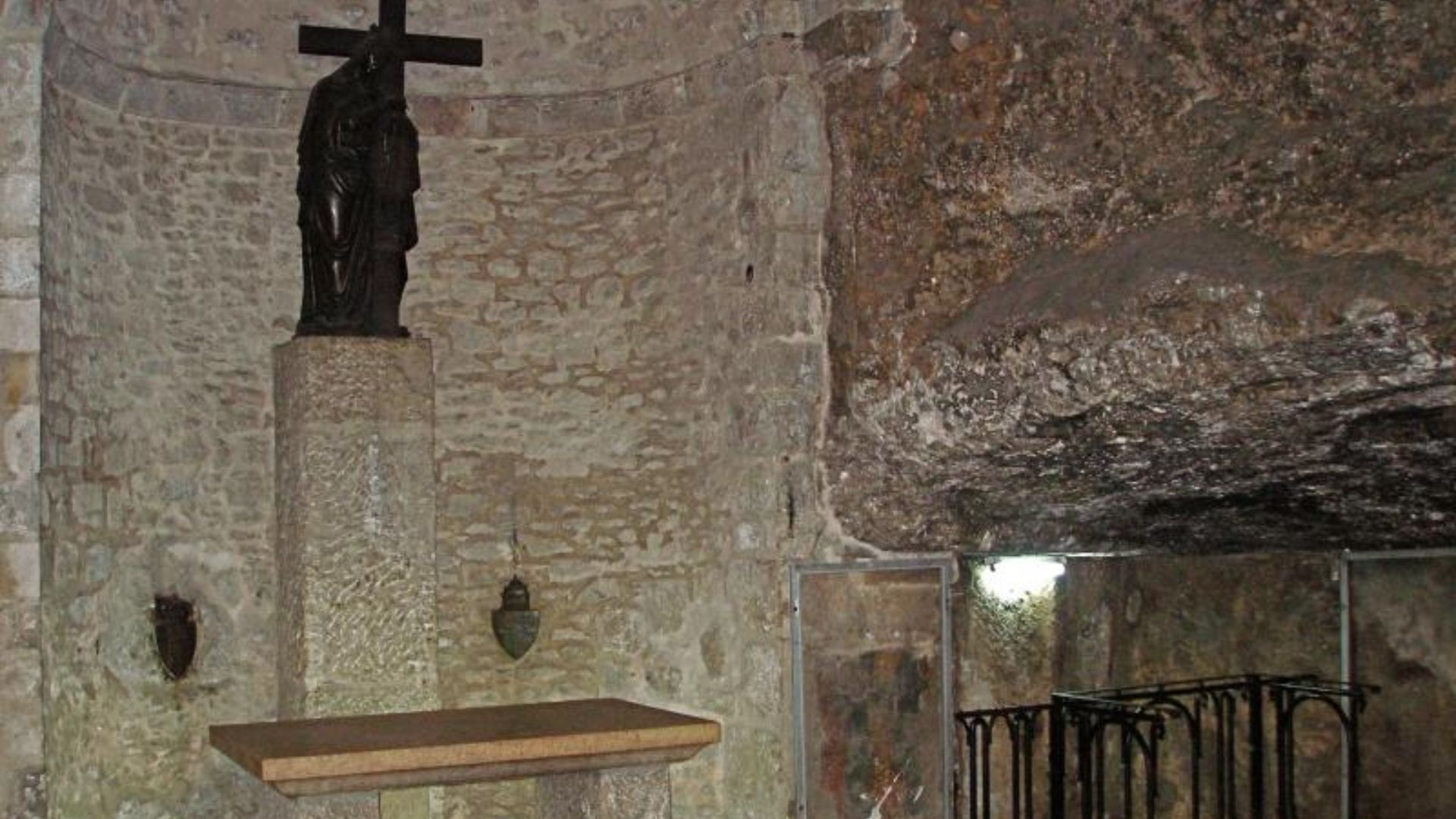When we honor, or exalt, the Cross, Christians are primarily acknowledging Christ Himself (2nd Council of Nicaea).
The feast of the Exaltation of the Holy Cross celebrates two historical events: the discovery of the True Cross by Saint Helena, the mother of the Emperor Constantine, in 320 under the temple of Venus in Jerusalem, and the dedication in 335 of the basilica and shrine built on Calvary by Constantine, which mark the site of the Crucifixion.
The basilica, named the Martyrium, and the shrine, named the Calvarium, were destroyed by the Persians in 614. The Church of the Holy sepulcher which now stands on the site was built by the crusaders in 1149.
The quest to find “The True Cross”
The year was AD324, Saint Helena, mother of the Roman Emperor Constantine set out on a pilgrimage to the Holy Land. Her quest to find the “Holy Sepulcher” and “The True Cross.” The “Holy Sepulcher” is the location of the crucifixion of Jesus Christ, and “The True Cross” is the cross on which Jesus Christ was crucified.

Discovery of the True Cross by Agnolo Gaddi
So why did a Queen, set out on this holy pilgrimage. Who is Helena the Queen? Flavia Julia Helena was a young servant girl, born in 248 C.E. in Bithynia, a province of the Roman Empire. Helena was no different from anyone else, until the day that she caught the eye of the Roman emperor, Constantius I Chlorus, with her beauty. They married, had a son in the year 272 who, if you have ever learned anything about Roman history, you will probably know. Their son was the one and only Constantine.
Constantine became one of the greatest Roman emperors. One of the things he is known for is the Edict of Milan, issued in the year 313. In AD313, with the Edict of Milan, the Emperor allowed for Christianity to be a freely practiced religion. It was at this time that Helena most likely converted to Christianity.

Altar of the Crucifixion where the rock of calvary can be seen
While on the pilgrimage, it was said that Helena “followed in the footsteps of Jesus,” by performing many acts of kindness and good works, such as giving money, food, and clothing to the poor, and also helping churches with funds as well as other needs. After weeks of traveling, she finally made it to Jerusalem. With the help of Judas Cyriancus, a man selected at random and forced against his will to help, Helena was able to get closer than she ever had to finding “The True Cross.” This is where the story diverges. Although some believe a commoner from a nearby town led Helena to “The True Cross,”others believe that it was Judas Cyriancus.
They continued their search for days, when their prayers were finally answered. Helena said it was then, “with sweet smelling dust and a flash of lightning” that she pointed to the place where she instructed Judas to started digging. Finally, they uncovered three crosses, one thought to belong to Jesus Christ, and the others belonging to the two thieves that died alongside Him.
Now came the real challenge, how do they which one of these crosses truly belonged to Jesus Christ? They then searched for a leper at the outskirts of Jerusalem. Once one was found, they returned back to the site of Golgotha, the place of Jesus’ crucifixion. The leper was instructed to touch each of the crosses one by one. He touched the first one and nothing happened. He touched the second one and still nothing happened. Finally, when he touched the third and final cross, the leper was instantly healed. It was this cross that healed the leper, and for that reason it is known as “The True Cross.”

The Chapel of the Finding of the Cross beneath the Church of the Holy Sepulcher
The cross immediately became an object of veneration and was carried back to Constantinople. Part of the cross was placed in the hands of the bishop of Jerusalem. At a Good Friday celebration in Jerusalem toward the end of the fourth century, according to an eyewitness, the wood was taken out of its silver container and placed on a table together with the inscription Pilate ordered placed above Jesus’ head: Then “all the people pass through one by one; all of them bow down, touching the cross and the inscription, first with their foreheads, then with their eyes; and, after kissing the cross, they move on.”
As the years passed, fragments of “The True Cross” were placed in the care of many Catholic churches around the world for all to admire.

A fragment of the True Cross inside the Schatzkammer of Vienna
To this day, the Eastern Churches, Catholic and Orthodox alike, celebrate the Exaltation of the Holy Cross on the September anniversary of the basilica’s dedication. The feast entered the Western calendar in the seventh century after Emperor Heraclius recovered the cross from the Persians, who had carried it off in 614, 15 years earlier. According to the story, the emperor intended to carry the cross back into Jerusalem himself, but was unable to move forward until he took off his imperial garb and became a barefoot pilgrim.
The Catechism of the Catholic Church states,
The Council of Trent emphasizes the unique character of Christ's sacrifice as "the source of eternal salvation" and teaches that "his most holy Passion on the wood of the cross merited justification for us." And the Church venerates his cross as she sings: "Hail, O Cross, our only hope" (CCC 617).
However the feast, more than anything else, is a celebration and commemoration of God's greatest work: his salvific death on the Cross and His Resurrection, through which death was defeated and the doors to Heaven opened.
The entrance antiphon for the Feast of the Exaltation of the Holy Cross is: "We should glory in the cross of our Lord Jesus Christ, for he is our salvation, our life and our resurrection: through him we are saved and made free."